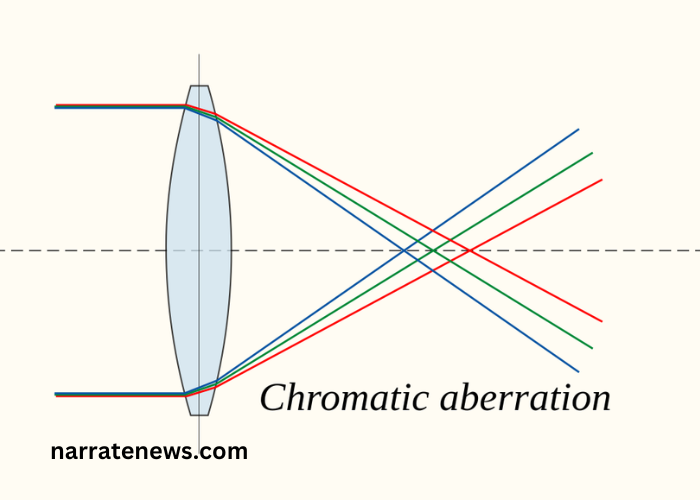
What is chromatic aberration
Chromatic aberration is a common optical phenomenon that affects the quality of images produced by lenses and optical systems. In this article, we will delve into what chromatic aberration is, explore its causes, discuss its effects on images, and review various solutions used to minimize or correct it.
What is Chromatic Aberration?
Chromatic aberration, also known as color fringing or purple fringing, is a type of optical distortion that occurs when a lens fails to focus all colors of light to the same convergence point. This results in colored edges or halos around objects in an image, especially noticeable along high-contrast edges. The phenomenon occurs because different wavelengths of light (colors) bend by varying amounts as they pass through a lens, leading to a failure of the lens to bring all colors to a single focal point.
Types of Chromatic Aberration
There are two main types of chromatic aberration:
Lateral Chromatic Aberration: This type of chromatic aberration causes different colors of light to focus at different positions along the optical axis, resulting in color fringing at the edges of the image.
Longitudinal Chromatic Aberration (Axial Chromatic Aberration): Also known as “bokeh fringing,” this type occurs when different colors of light are focused at different distances from the lens, resulting in colored halos around out-of-focus areas.
Causes of Chromatic Aberration
Chromatic aberration is primarily caused by the dispersion of light in a lens—where different colors are refracted (bent) by different amounts as they pass through the lens material. This dispersion is inherent to the design and materials of the lens and cannot be entirely eliminated.
Other factors contributing to chromatic aberration include the lens’s design, the curvature of lens elements, and the refractive index of lens materials. Cheaper or lower-quality lenses tend to exhibit more chromatic aberration compared to high-quality lenses with specialized coatings and elements.
Effects of Chromatic Aberration
The effects of chromatic aberration can be visually distracting and impact the overall quality of an image. Common effects include:
Color Fringing: Colored halos or fringes around objects in the image, especially noticeable in high-contrast areas.
Loss of Image Sharpness: Chromatic aberration can reduce the overall sharpness and clarity of an image, particularly towards the edges of the frame.
Reduction in Contrast: The presence of color fringing can lead to a reduction in contrast, making the image appear less defined.
Solutions to Chromatic Aberration
Various techniques and technologies are used to minimize or correct chromatic aberration:
Lens Design: Advanced lens designs, such as apochromatic (APO) or extra-low dispersion (ED) lenses, are specifically engineered to reduce chromatic aberration by better controlling the dispersion of light.
Lens Coatings: Anti-reflective coatings applied to lens surfaces can help reduce internal reflections and minimize chromatic aberration.
Use of Aspherical Elements: Incorporating aspherical lens elements in the lens design can help correct aberrations, including chromatic aberration.
Post-Processing Software: Digital image editing software, such as Adobe Photoshop or Lightroom, often includes tools for correcting chromatic aberration in post-production by selectively adjusting colors and sharpness.
Importance in Photography and Optics
Understanding chromatic aberration is crucial for photographers and optical engineers striving to achieve high-quality images and optical performance. By recognizing the causes and effects of chromatic aberration, professionals can choose appropriate lenses and techniques to minimize its impact and enhance image quality.
Conclusion
Chromatic aberration is a common optical phenomenon that affects the quality of images produced by lenses and optical systems. By understanding its causes, effects, and solutions, photographers and optical engineers can take steps to minimize chromatic aberration and achieve sharper, more vibrant images. As lens technology continues to evolve, the impact of chromatic aberration is gradually mitigated, leading to improved optical performance and image quality in modern photography and optics.


